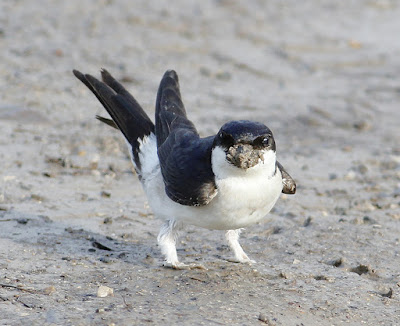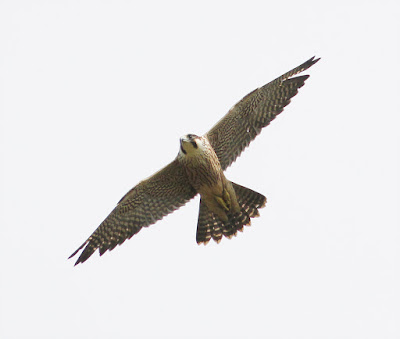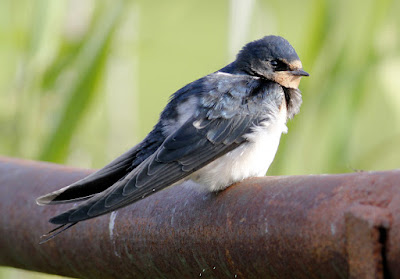Tuesday and a day set aside for the joys of grand parenting. But first an hour or two at a regular birding spot.
A Spoonbill, a waif and stray from continental Europe has been the centre of attention at Conder Green since the weekend. There was no rush to see it as I see Spoonbills in Spain each year, but when I finally caught up with the bird this morning it was distant at the mouth of the River Cocker, and as Spoonbills are wont to do, just sitting around and doing very little. It didn’t stay around long but flew up river towards Lancaster and to the bolthole it seemingly uses when disturbed, usually by those doggy folk.
Not to worry, better birding was provided by more mundane birds like a Peregrine, Kingfisher, and other wading birds which provide lots to appreciate for the average birder.
This vagrant Spoonbill has appeared along with an increased number of Little Egrets, my recent five or six finger counts here surpassed today by one of eighteen, 15 on the estuary and 3 on the pool and in the roadside creeks. A Spoonbill seems to spend all of its time standing around doing nothing whilst a Little Egret spends most of its time thrashing around in shallow water. One is bound to ask, which is the most efficient way of feeding, a spoon or a spear?
Spoonbill
Little Egret
Trying to get a handle on the numbers of waders here is difficult due to distance and looking into the early morning light but I came up with guesstimates of 450 Redshank, 800 Lapwing, and 3 Greenshank until a Peregrine came along. If a Peregrine can be nonchalant this one was; an accomplished hunter which set thousands of birds into the air but then ignored them to simply grab a slow-to-react Redshank from the marsh below. The Peregrine flew to the far side of the river as the Redshank swung beneath and the Lapwings swirled around and called in alarm before they settled again. When a life is lost in the natural world the moment is soon passed, the drama over in the blink of an eye before everything returns to “normal”.
Peregrine
A Kingfisher hunted Conder Creek where it hovered at eight or ten feet above the shallow water now and again before diving into what seemed inches of water. The Kingfisher took breaks by finding a suitable place to sit on the sandy sides of the creek where I left it to dry off and nurse its headache while I looked for other birds. Three Little Grebe, 2 Teal, 2 Shelduck and 3 Common Sandpipers was all I could add.
On the way home a juvenile Kestrel studied the ground below from a roadside pole, the falcon oblivious to my presence.
Kestrel
At Knott End and as the tide rolled in, 30+ Sandwich Tern, 1900 Oystercatcher, 90 Redshank, 18 Curlew and 2 Little Egret.
Too soon my pass expired but there are more birds soon on Another Bird Blog.
Linking today to Stewart's World Bird Wednesday.
Linking today to Stewart's World Bird Wednesday.





















































.jpg)












